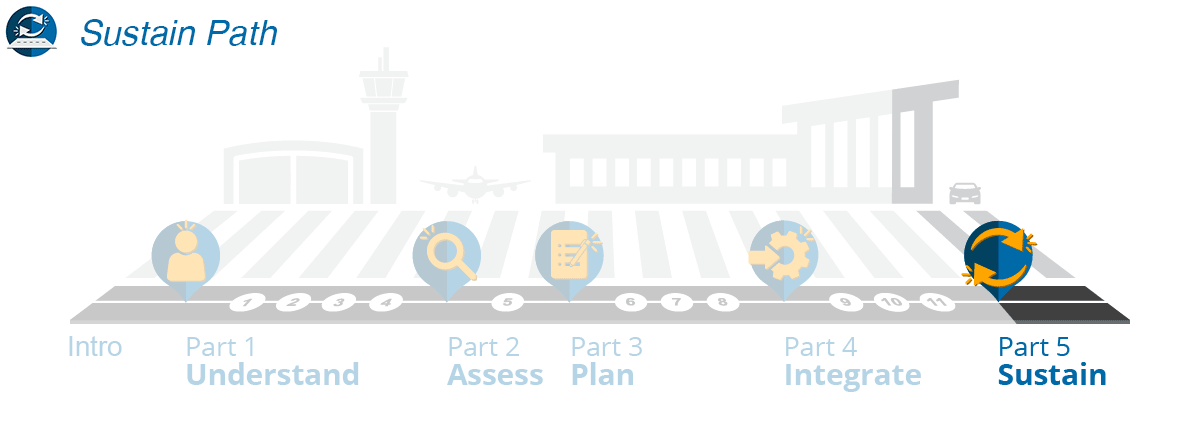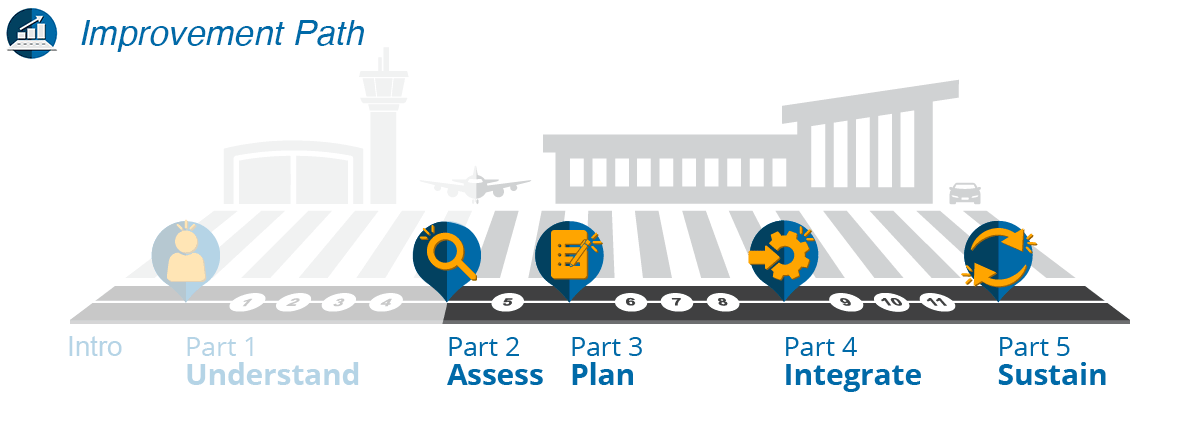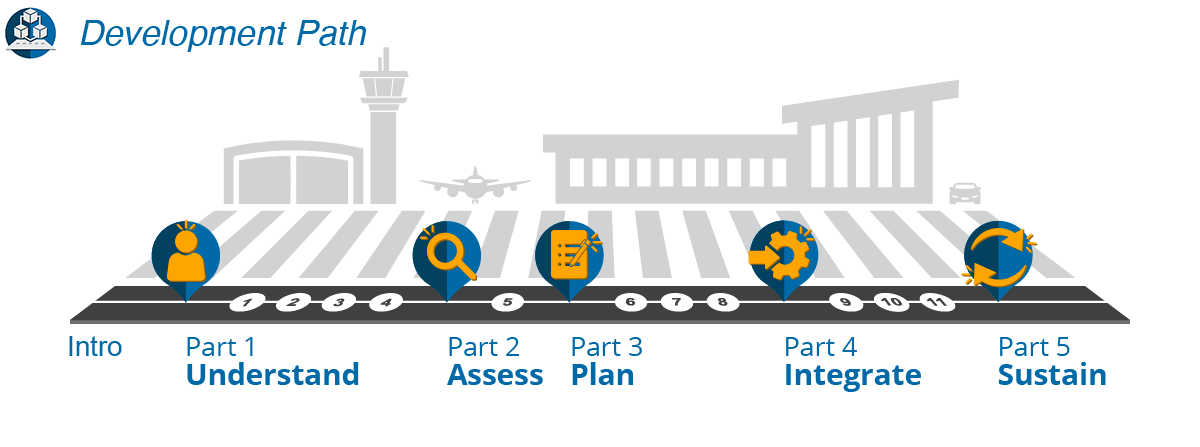
Step 2: Understand Social Media Uses in Emergency Management
RESPONSE
During the Response phase, mitigation and preparedness efforts are put to the test. Response is putting your plans into action to save lives, protect property, and mitigate the effect of an incident on the airport's operations. With the ability to reach a wide audience quickly, SM can be a key part of the Response phase. Response includes first responders (both public safety and stakeholder operations), intelligence gathering, managing the emergency operations/joint information centers (EOC and JIC), and engaging airport and community stakeholders to react to life, safety, and operational issues.
We recommend the following uses of the four SM management functions in the Response phase.

Listening During Response
Use #1: Listen for airport users on public SM channels who post information that could impact real-time response efforts or have posted that they are affected by the issue. This is a foundational use of SMEM with potentially life-saving benefits when the information is provided to those who can respond.
Use #2: Listen for internal (i.e., other airport departments) and external stakeholders (e.g., airlines, federal/state/local agencies) on public and private SM channels who post information that could impact real-time response efforts. Having a network of trusted sources can speed up the process of validating information gathered from listening, shortening overall response time to the issue.

Engagement During Response
Use #1: Engage with airport users on public SM channels to provide real-time direction to individuals to help keep them safe. You can engage either privately with individuals or publicly across the broad range of listeners. If engagement originates at a private level through SM messaging functions, it should remain private. However, if an individual posts a question publicly, you can choose whether it is appropriate to continue the public engagement or transition to private messaging. One benefit of public engagement is that in answering one person's question, you can potentially simultaneously answer the questions of others. Another benefit of public engagement is that it can encourage others to use SM as a tool to engage with the airport during these types of situations. It can also demonstrate an airport operator's trustworthiness as an information source on SM channels.
Additionally, posts from airport users may be one of the first indicators that an issue is escalating. For example, if a user posts a picture of a developing event, the airport should consider engaging with the user to gather more info on the situation, provide direction, and update the appropriate responder group and stakeholder to maintain a shared situational awareness.
Use #2: Engage with internal stakeholders on private SM channels to coordinate response to a critical issue. In most airports, any badged individual is viewed by the traveling public as a trusted information source. Engaging with all or a select number of these internal sources and leveraging your stakeholder's public SM channels creates a force-multiplier to reach and assist the public.

Publishing During Response
Use #1: Publish on public SM channels regarding an ongoing issue, providing actionable information for airport users as they make decisions on what to do. This is similar to your mitigation strategy, but here you are providing airport users with information for response to an active issue. This information is also often used by traditional media networks looking to provide accurate information on their channels. When publishing, it is a good practice to choose your specific SM channel as the official source for updates. Once this information is published, there are many ways you can amplify its reach boundaries, such as the following combinations with traditional tools:
- Use a content management system (CMS) that allows all monitors in the airport to display official updates on the ongoing emergency situation that the airport has posted on public SM channels.
- Use the PA system to direct airport users to public SM channels where the airport is releasing official updates on the ongoing emergency situation.
As you publish actionable information for airport users, it is imperative that you keep the information usable. If you only state that there is an emergency event taking place and that the airport is responding to it, and you provide no real direction to airport users, both you and your message may lose credibility. Airport users and the media will look elsewhere for any further information; and with the amplification power of SM, they may stumble on much less trustworthy information than what you can provide. This can present difficulties for all stakeholders, ranging from the passengers who are focused on avoiding the event and continuing their travel, to the EM staff who are responding to and mitigating the situation.
Use #2: Publish on private channels to internal and/or external stakeholders to update them on the ongoing issue, providing more detailed information necessary for an appropriate response. Private secure responder messaging channels can enable this publishing during emergencies, which can greatly amplify the reach of information when compared to more traditional methods. Additionally, these channels may also allow you to add users to the communications chains mid-event. Using these private channels can help facilitate collaboration for a successful response to the event.

Reporting During Response
Use #1: Report (organize and distribute) to appropriate stakeholders on the results of the listening, engagement, and/or publishing efforts noted above. Through Reporting, you can redirect your message if it is not reaching the desired demographic. If you have the technical capability, you can realize great benefits by using real-time analytics to help identify trends and activities that may impact response.




